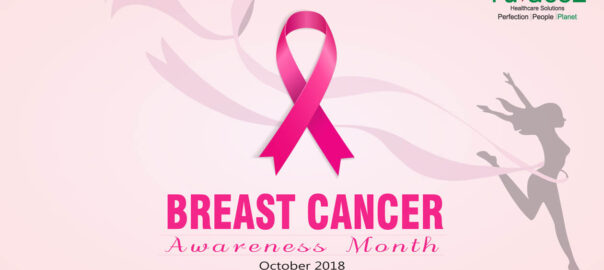The month of October is dedicated to breast cancer to create awareness regarding this prevalent cancer in women, globally. Breast cancer accounts for up to 25% of all new cancers diagnosed in women worldwide. With this being such a serious health issue, it is important to raise awareness about the same.
Here are few of the stories from some of the brave breast cancer survivors:
1. This story is of Kajal:
“My world fell apart on learning that I had breast cancer. It was discovered that my tumor was 1.2 cm and my cancer turned out to be both estrogen and progesterone positive. I cried my eyes out. I was only 24, it wasn’t the time for me to be dealing with cancer. I had different dreams and aspirations but now everything was so different.
I had no family history of breast cancer, so I never ever imagined that I would be going through this. My family and the doctors were my greatest support at this very terrifying phase of my life. Post discussions it was decided that I would be going through double mastectomy. My doctors weren’t concerned about the preservation of fertility until they discovered that I would be needing chemotherapy.
I was clueless when asked that whether I wanted to freeze my eggs, considering that I was so young. But I went on for it. I didn’t wanted to give up on my long hair locks but seeing them fall out in chunks was heartbreaking and I ended up shaving my head.
I was scared to look at myself in the mirror. I was frustrated, sad and miserable complaining why it had to be me! Life was so unfair. But I came in touch with other women who were fighting the same ailment as me. Slowly I began to regain the lost spirit and strength and was determined to defeat cancer. I decided to be a fighter. Everyone around me was so supportive.
It has been 1 year, and I have survived various round of chemo and radiations and I am still going strong. To all the young girls out there struggling with cancer, I would say that don’t let cancer break you, your dreams and your soul. Pull up your socks and fight back and you would emerge victorious.”
2. Neeta’s story:
“Life was going smooth. I got married to the love of my life at the age of 32. We were thinking of a beautiful future ahead, but my world flipped upside down on learning that I had breast cancer. I was noticing a lump on my right breast and ignored it for several days think of it as a normal cyst. My husband insisted that I once get it checked. I had an ultrasound, escalated to mammogram and then biopsy to confirm that I my diagnosis would be for stage 2 triple negative breast cancer.
I was shattered. I knew being a cancer patient means taking all those painful chemo sessions and a lot more and going through various side-effects of the therapies. All I could think of was that it couldn’t have happened to me. I felt helpless but my husband, family and the doctors comforted me and made me believe that I could be cured.
As the chances for pregnancy would eventually decrease with chemo, I went through IVF and got my eggs freezed in hopes of becoming a mother someday. It all began then. I have completed 17 rounds of chemo and dealt with various extra drugs helping me to fight cancer.
I cried seeing my hair fall. I sometimes didn’t had strength to even speak loudly and I ended up crying silently blaming god for my condition. I was dealing with fatigue, nausea and some neuropathy issues.
Undergoing 30 rounds of radiations was not half as painful as the mental and emotional pain I was going through. At one point I even stopped thinking of any future fearing that there might be no future for me. But the support I received from my family, husband, doctors and friends dragged me out of the big black hole of depression I was plunged into.
I came in contact with other cancer patients and interacting with them I learned many things that helped me cope up with this frightening disease. I learnt to be thankful for each day I was breathing, realizing how precious life was. I felt blessed to have such a supporting husband and lovely family and friends besides me, who stood out for me in my toughest times.
It has already been 4 years now and I am all better. I do visit my doctors for health checkups and other essential. I have learned to live even better post cancer. May be not in the best possible way, but I feel cancer has made me a better human being.
Never give up and keep up the spirit. Nothing can bring you down, not even cancer. Just learn how lucky you are to be alive. Learn to give and spread happiness all around.”
Turacoz Healthcare Solutions stands in support of all the women and men dealing with breast cancer and wants to convey them a message that:
“Cancer is not the definition of you. Cancer is just a situation that happened to you. It does not need to define you personally. Gather all your strength and courage and fight against it. No ailment is stronger than your will to live. Be brave, be bold. Wear your pink gloves on and punch the cancer in its face!”







